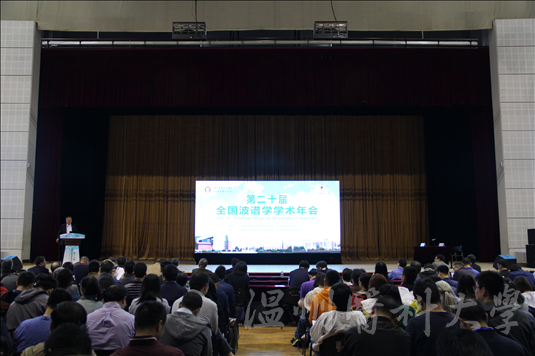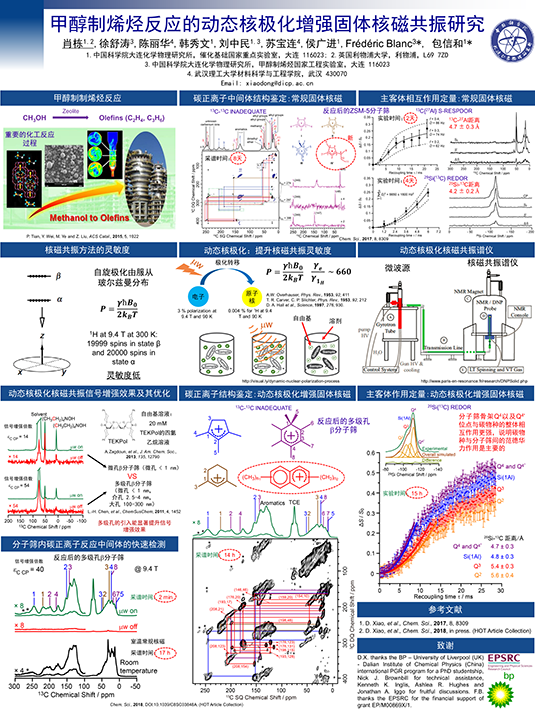The 20thNational Conference on Spectroscopy was held in Wenzhou Medical University on October 11~14th, 2018. Nearly 400 experts and scholars from universities and institutes in the United States, France, Singapore, Hong Kong, Taiwan and mainland China were attracted.

Three sub-sessions of biology, chemistry and physics were set during the four-day conference separately. 6 plenary lectures, 6 application reports for "Wang Tianjuan spectroscopy Award" and 71 grouped reports were delivered and 126 academic posters were exhibited, which showed the cutting-edge scientific research on chemistry, biology, physics and medical science using NMR technique.


Xiao Dong made a poster about Dynamic Nuclear Polarization (DNP) technique which can enhance the NMR signals by multiple orders of magnitude by transferring the large polarization of electrons to nearby nuclei via microwave (μw) induced electron-nuclear transitions, thereby leading to significant reduction in experimental time. Because of the interesting and informative poster, Xiao Dong won the second-class prize of "the Best Poster".

Xiao Dong (second from the left)

Besides, Gong Ke gave a wonderful oral report named "Insights into the Preferential Adsorption of Small Molecules in MOR Zeolite by129Xe NMR". In this work, hyperpolarization (HP)129Xe NMR was used to study the pore structure of the MOR zeolite. The adsorption process of methanol and water on MOR zeolite were studied by in situ HP129Xe NMR experiments.129Xe NMR of co-adsorption between Xenon and small reaction molecules, i.e. water, methanol and ketene, revealed the feature of preferential adsorption of small molecules in MOR two channels of MOR zeolites, and their influence on the catalytic reaction was discussed.

Chen Hongyu made a poster about Syngas Conversion on Zinc-Gallium Oxide Investigated by ssNMR Spectroscopy.It found that oxide plays a crucial role in the catalytic reaction. However, the local microstructure, as well as the distribution and mechanism of the active sites on the oxide surface, have not been fully understood. As one of most important characterization tools, solid-state NMR can provide significant structural and kinetic information at the atomic-level and has been widely used in catalysis research.